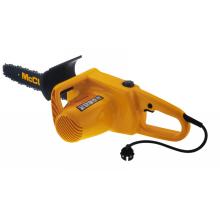Eastexan
ArboristSite Member
I've been wondering for some time what exactly determines a "Pro" saw. I hear the words "Pro Saw" and "Homeowner Saw" being used here a lot, and would like to know just what exactly determines a "Pro Saw"? 
I read a thread the other day that the modern professionally designed engine is vertically split and not the "clamshell" design, even though the clamshell isn't a bad design and was used in some older pro saws. So I assume this is a "has to have" for a pro saw.
Also, I heard one time that magnesium crankcases also determines a pro saw.
But in 1993, I bought an Husky 51 that the dealer told me it wasn't a pro saw but did have a magnesium crankcase and chromed cylinder. This was before Husky's saw line-up was divided up into 3 segments, like they & Stihl are now.
Sears has a "Craftsman Professonal" chainsaw listed on their website, but in reading their description, the only thing that stands out is the "reduced vibration" and "chromed cylinder". But maybe they're not naming everything.
I've seen some manufacturers claim that some of their lower priced saws also have "Pro" features, but doesn't say what exactly they are.
I remember reading several years ago where a chainsaw design tech or engineer claimed that there was a durability standard listed for all chain saws, and that they are rated from 50 to 300 hours.
The meaning was that they were rated to last at least the number of hours stated, before having to be overhauled or scrapped.
The 50 hours was occasional/homeowner use, and I believe the middlegrade/landowner was 150 hours, and the pro saws was the highest at 300 hours.
I believe that he said every chain saw sold has to have a tag showing this. But I bought a new saw last year that didn't have one on it, so I don't know if all this is true or not.
So, what I'm wondering is if there is some official definition somewhere explaning all the criteria that have to be met or features that have to be on a saw before it can be called a Pro saw? :help:


I read a thread the other day that the modern professionally designed engine is vertically split and not the "clamshell" design, even though the clamshell isn't a bad design and was used in some older pro saws. So I assume this is a "has to have" for a pro saw.
Also, I heard one time that magnesium crankcases also determines a pro saw.
But in 1993, I bought an Husky 51 that the dealer told me it wasn't a pro saw but did have a magnesium crankcase and chromed cylinder. This was before Husky's saw line-up was divided up into 3 segments, like they & Stihl are now.
Sears has a "Craftsman Professonal" chainsaw listed on their website, but in reading their description, the only thing that stands out is the "reduced vibration" and "chromed cylinder". But maybe they're not naming everything.
I've seen some manufacturers claim that some of their lower priced saws also have "Pro" features, but doesn't say what exactly they are.
I remember reading several years ago where a chainsaw design tech or engineer claimed that there was a durability standard listed for all chain saws, and that they are rated from 50 to 300 hours.
The meaning was that they were rated to last at least the number of hours stated, before having to be overhauled or scrapped.
The 50 hours was occasional/homeowner use, and I believe the middlegrade/landowner was 150 hours, and the pro saws was the highest at 300 hours.
I believe that he said every chain saw sold has to have a tag showing this. But I bought a new saw last year that didn't have one on it, so I don't know if all this is true or not.
So, what I'm wondering is if there is some official definition somewhere explaning all the criteria that have to be met or features that have to be on a saw before it can be called a Pro saw? :help:




























































